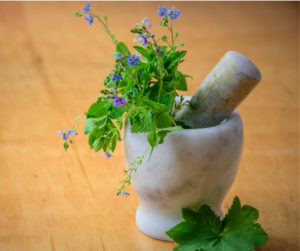The Enneagram is a psycho-spiritual system with roots, connections, and grounding in a variety of spiritual traditions. Exploring the spiritual roots of the Enneagram, one can find connections between the Enneagram and a variety of other systems. One such system is Ayurveda, an ancient Indian spiritual tradition. Exploration of both systems shows that the spiritual underpinnings of the Enneagram and Ayurveda both intersect.
Although the Enneagram is a system with a strong spiritual component, Riso and Hudson are clear that they do not consider the Enneagram alone to be a spiritual system. There are individuals who teach the Enneagram in settings such as psychological treatment centers, business, and coaching who use it simply as way to describe personality without addressing spirituality.
However, Riso and Hudson believe working with the spiritual component of the Enneagram, along with its psychology, is essential to accessing our Divine Essence, or our Essential Being or Spirit. Riso and Hudson believe the key to Essence is the development of Presence, which allows us to identify less with the constrictions the personality and ego put on us. Riso and Hudson believe the key is Presence is “catching oneself in the act,” or conscious and non-judgmentally observing our patterns as they happen in the moment.

Riso and Hudson emphasize that it is difficult to maintain presence, as unearthing layers of the ego bring up further layers, frustrations, and fear of our personality. In order to work through this, they believe participants in inner work must have a daily spiritual practice that supports the development of Presence. The practice can be of each individual’s choosing, but the practice must support us in developing self-awareness, exploring the difficult aspects of our personalities, and to find out own answers.
Along with daily practice, they encourage that people, as part of a spiritual path, seek truth, cultivate “not doing” (not acting out on the unconscious impulses of the personality), openness, getting support from others, learning from everything, and loving oneself. Ultimately, if we are able to find Essence through practicing Presence, Riso and Hudson believe we each find we already had what the personality was looking for.
Ayurveda is an ancient Indian spiritual system with some essential similarities to the Enneagram. Ayurveda, like the Enneagram, has roots in both religion and spirituality, as well as scientific roots that correlate with the psychological grounding of the Enneagram. Ayurveda is founded on the philosophy of Samkhya creation, roughly translated to “To Know Truth.”
Through this philosophy, Ayurveda teaches individuals to develop a practice of health and well-being that supports them in connection with the divine sources of life: the instincts of religion, finance, procreation, and freedom. Samkhya is the combination of Purusha, the male energy of pure existence and creation of universal form, and Prakruti, the feminine energy of creativity and the force of action in divine creation.
The Purusha and Prakruti energies come together through Mahad, cosmic intelligence, and Ahamkar, the ego. From the ego comes Satva, a stable creative potential governing the sense faculties, motor organs, and mind, Tamas, a potentially destructive static force , and Rajas, the dynamic force of movement within the body. The Tamas also govern the five elements, ether, air, fire, water, and earth.
From the five elements arises the tridosha, Vata, Pitta, and Kapha. While everyone has all three doshas within them, they can have seven basic constitutions: Vata, Pitta, Kapha, Vata-Pitta, Pitta-Kapha, and Vata-Kapha, and Vata-Pitta Kapha. In order to balance the tridosha, individuals need to follow a food and lifestyle program to promote a balance in the three doshas. Vata is the element of air and space and represents the science of movement. Individuals of a primary Vata dosha tend to be creative and quick-moving, but high strung, anxious, and prone to tiring easily. Vatas are prone to disorders of digestion in the colon, as well as arthritis and dry, cracked skin and nails. Vatas need to build regularity into their lives and schedules, while focusing on eating foods that are warm, nourishing, and oily.
Those of the Pitta dosha, which is governed by fire and water and is the science of heat, tend to be intellectually sharp and fiery individuals, but they also struggle with strong feelings of anger, rage, and hatred. The dosha is centered in the small intestine and is prone to disorders such as heartburn, hives, and acne. People who are primarily pittas need to eat foods that are cooling and allow for relaxation in the body, while allowing for a lifestyle that involves relaxation and spontaneity to calm their natural fire.
Finally, the Kapha dosha is governed by water and earth and is the force of stability. Kapha individuals are stable, solid, agreeable people, but they also are prone to possessiveness, over-attachment to others, and holding onto things. Kapha is centered in the stomach, and Kapha-related ailments include obesity, colds, and coughs. Kapha individuals need to eat dry, warm foods, and they need to eat less frequently than the other doshas and add stimulating activities to their life.
The basic spiritual practices of Ayurveda and the Enneagram have strong similarities. Although everyone has a primary dosha constitution, Ayurveda acknowledges and values individuality and realizes everyone has a unique tridosha. Similarly, Riso and Hudson believe everyone has a primary Enneagram type, but they believe everyone has all nine types and three instincts within them, in uniquely different proportions for each individual. Ayurveda texts, much like Riso and Hudson, believe everyone needs to develop a daily practice to increase one’s psychological and spiritual health and balance.
In his text on Ayurveda, Dr. Lad discusses some examples of daily practices that allow one to observe and maintain a positive state of personal health and well-being. These include the examination of one’s eyes, tongue, and urine for disease and imbalance, morning meditation, bathing, yoga, and a regular daily routine. Riso and Hudson also encourage bodily awareness in Enneagram spiritual practice, through conscious eating and relaxing into conscious awareness of the body.
There are also correlations between the Enneagram and Ayurveda and the Spiritual Laws of Three and Seven. Riso and Hudson describe the Law of Three, described as discovered by Gurdjieff, as the universe, and all manifestations thereof, coming to exist from three forces interacting, or communicating. In Wisdom of the Enneagram, Riso and Hudson see this law at the foundation of the Enneagram, including the symbol itself, as well as being at the root of major religions and even the laws of physics. The Law of Seven introduces the importance of movement in nature. Riso and Hudson believe the Law of Seven shows that nothing stays the same over time, that everything in the universe is constantly moving, evolving, and changing. In the Enneagram, this is seen in the hexad, as well as in areas such as music and the periodic elements.
In Ayurveda, just like the Enneagram, there are multiple instances of the Law of Three and Law of Seven. In Ayurveda the Law of Three is found at the roots of the system, as Riso and Hudson indicate is frequently found within spiritual traditions of all kinds. Additionally, some of the instances of the Law of Three in Ayurveda correlate directly with triads found in the Enneagram. The most obvious instance of the Law of Three in Ayurveda is the tridosha.
The properties described earlier in the brief descriptions of each dosha shows that doshas have a rough correlation with the three Enneagram centers: Gut, Heat, and Head, and with the three instincts: Self-Preservation, Sexual, and Social. The Vata dosha, with its constitution being prone toward anxiety and mental nervousness, seems to correlate with the head triad, while the airiness and movement-centered quality of the Vata correlates with the ability of the Social Instinct to scan and attune the room.
The Pitta dosha seems to correlate with the Gut center, as Pitta types are prone to anger and rage when imbalanced. Furthermore, the fiery, intense qualities of this dosha correlate with the Enneagram’s Sexual Instinct. The Kapha dosha, with the qualities of attachment and possessiveness, correlates with the qualities of the Enneagram’s Heart Triad. The Kapha qualities of steadiness and solidity also correlate with the Self-Preservation Instinct.
This is not to say, for example, that every person with a predominantly Vata constitution is a head type or a Social Instinct dominant. However, it is possible that, for example, an Enneagram Four, a heart type, may display more obvious qualities of nervous and anxiety than a Four who is a Kapha type. This is an area for potential further observation and research in correlating these two systems.
Additionally, in a more global perspective, Dr. Lad indicates that Ayurveda is practiced in a triad with Tantra and Yoga. According to Dr. Lad, Ayurveda is the foundation of spiritual practice, and it must be fully understood before one can delve into Yoga, which governs the body, and Tantra, which governs the head and consciousness.
The Law of Seven is present in two places in the basic principles of Ayurveda. The first is that, as stated earlier, although there are three basic Doshas, with the combination of the three Doshas, there are seven Ayurvedic constitutions. Dr. Lad writes: “Among these seven general types, there are innumerable subtle variations that depends on the percentage of vata-pitta-kapha elements in the constitution” (Ayurveda, 29). This suggests a static, constantly moving nature of the three Doshas in nature consistent with the Law of Seven.
Ayurveda also possesses the Law of Seven in the principle of the Seven Dhatus, or constructing elements of the body. They are known as Rasa (plasma), Rakta (blood), Mamsa (muscle), Meda (fat), Asthi (bone), Majja (marrow and nerves), and Shurka / Artav (reproductive tissues). The Dhatus each receive nourishment from the previous Dhatu (Lad, 45). The connection between the Dhatus allow for the nourishing of the body, much as the Enneagram types are connected through each other through lines in the symbol, and one must acknowledge all nine types, along with one’s primary Enneagram type, for one’s personal and spiritual growth.
I’ve been studying the Enneagram for over ten years, and my discovery of Ayurveda has greatly enhanced my work with the Enneagram. Ayurveda, much like the Enneagram, can simply be practiced as a dietary lifestyle without acknowledging the greater underpinnings of the system. Yet, like practicing the Enneagram merely as a system of personality, one is missing out on significant opportunities for personal and spiritual growth.
Through my personal experience working with the my Enneagram type and Ayurvedic dosha constitution, I’ve found the individualized, foundational, pragmatic, and day-to-day focus of the Ayurveda system has helped me develop presence and my ability to “catch myself in the act.” Ayurvedic practices have been especially useful for grounding myself in my physicality, which is particularly important for Enneagram types in the withdrawn triad, who have weak gut centers. I believe that others would be able to benefit from a practice combining the spiritual and philosophical underpinnings of Ayurveda and the Enneagram.
References
Hudson, Russ and Gayle Scott. The Riso-Hudson Enneagram Professional Training Program: Part III Training. Stone Ridge, NY, March 7-12, 2013.
Lad, Vasant. (Revised 2009). Ayurveda: The Science of Self-Healing. Twin Lakes, WI: Lotus Press, 2009.
Riso, Don Richard, & Russ Hudson. (1999). The Wisdom of the Enneagram. New York: Bantam Books, 1999.
Kacie Berghoef, MSW, is a Certified Enneagram Teacher and co-author of The Modern Enneagram. As a professional content writer, blogger, and social media manager, Kacie writes books, articles, blog posts, newsletters, and social media posts. Her writing has appeared in ThoughtCo, The Billfold, xoJane, MapQuest, Nine Points Magazine, and more. Kacie has assisted a wide variety of businesses with crafting professional, on-brand content.


